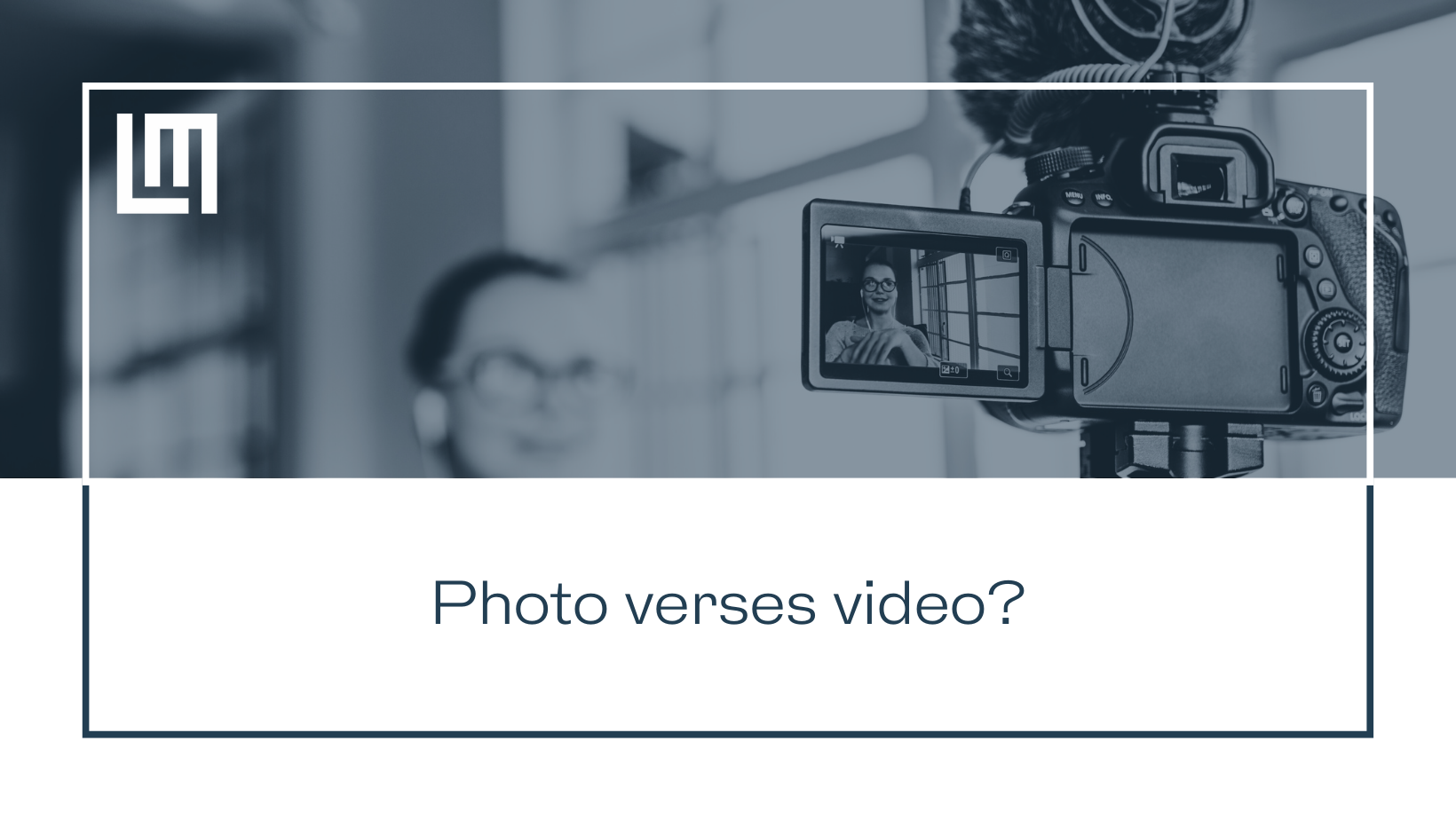Photo verses video - which is the best for engaging your audience on social media?
If you are using social media as a key element of your digital marketing, you will need to effectively engage your target audience with your photographs or videos. Viewers of social media usually expect visual content and are keen to interact with it, but business owners often wonder which marketing tool is best to use, photos or videos.
It is well known by marketing experts that people have a 65% retention rate of information with visual cues, compared with a 10% retention rate for those hearing or reading information without images.
Before you begin sharing either, you need to consider what you are offering, your target audience, the demographic, the size of your company and the funds you have set aside for your marketing.
Leading Motion has listed here some of the pros and cons on which content is the best to employ.
Photo pros
It’s quite common for small to medium businesses to use photographs to build their brand, as they are not complicated to create.
It is easy to commission an independent photographer to take your shots and they will have the skills to do the photo editing too for you.
Your viewers can scroll through photos more quickly and videos take longer to watch.
Pictures you take yourself of your team, selfies or events are acceptable on social media.
Photo cons
Experts have discovered that static images don’t compel your prospects to click and share, so the organic reach is likely to be less than using video.
There is less opportunity to include effects or a storyline/information with a static image.
There are a greater number of photographs that crop up in your consumers’ feed, so the competition is likely to be tough. Your images might get lost in the crowd.
The novelty aspect of photographs is waning in comparison with viewers flocking to TikTok and YouTube to watch videos.
Video Pros
The beauty for businesses marketing their products is that you can get your message across in more details quicker on video.
Videos are versatile and can be used for workshops, seminars, tuition, conferences and can more easily raise brand awareness with your prospects.
Videos give a brand a greater chance to tell a story and be creative. Just look at the big brands’ competition for the best advertising video at Christmas, for example.
Your audience is likely to spend longer looking at a video, which will boost your rankings with search engines.
They can be consumed rapidly by avid fans who are likely to reshare them. According to Facebook, videos draw more engagement than any other content and audiences are likely to find live videos six times more appealing than pre-recorded videos.
Video cons
While marketer consider there are definite advantages to using videos, one of the pitfalls is that they are more costly in time, money and effort.
Videos generally require more skills to produce and they are likely to take longer to make, compared to still images.
When time is of the essence, your target audience may be too busy to watch a video and interact with it, so a photograph may be a better option.
Who is your ideal audience?
It’s important to know your ideal customer and their behaviour, what they do, how much they are likely to spend and what they are interested in.
Young adults who enjoy watching video games are more likely to be interested in videos or streaming content.
On the other hand, art lovers or DIY fans are more likely to find short videos or infographics appealing which photography fans will prefer photographs of graphics.
Which social media platform should you use?
Once you know your target audience, it is easy to ascertain which social media platform they are likely to use.
For example, business owners and professionals use LinkedIn, while young people engage more with TikTok and Instagram.
It’s no good trying to sell your high-end cars on a platform where teenagers hangout, for example.
Do be aware that trends change, for example Facebook was a popular social media for teenagers a decade ago, but now they leave it for older people
What is your message?
Focus on your message first and what you wish to convey. This will help you to decide which medium is the best to get it across.
A photograph may be more appealing if you want to interact with your audience and engage with them daily.
On the other hand, if you want to give your viewers complex instructions like how to use your gadget or how to do a yoga position, if you are a fitness instructor, then a video would be the obvious tool to use.
Do a comparison test
If you are finding it difficult to determine whether to use a photograph or video on your social media, try producing both and reviewing the data afterwards.
Also use this opportunity to determine, when your target audience is engaging, whether they prefer familiar or formal language or whether they interact better with gifs or vlogs.
You may prefer to use a combination of photographs and videos. This is a good option of SMEs who may have fewer fuds to spend on marketing.
At Leading Motion, we have marketing experts who would be willing to offer their professional opinion. Give us a call today.
Share this post:


